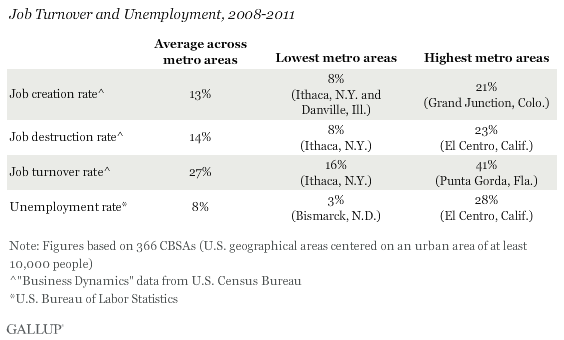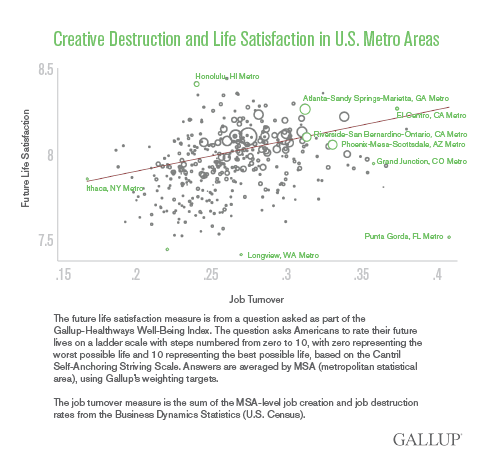Innovations, new ways of doing things, and new technologies are at the heart of economic growth, which has brought great benefits to mankind. But when entrepreneurs introduce these innovations, there are losers as well as winners. This is the process Joseph Schumpeter called "creative destruction," in which old methods and the livelihoods and profits that go with them are often "destroyed" by new upstarts.
We see this all around us. One recent example is the taxi industry, where the new technologies of smartphones and GPS devices have brought a whole new way of connecting cabs with their potential riders -- the most famous being Uber.
New entrants -- often entrepreneurs from other industries -- introduce these technologies, which may threaten and even destroy the incumbents' businesses, whose owners and employees may lose their livelihoods and their capital. Taxi medallions in New York City have seen substantial losses in value; in London, "the Knowledge" of every street and alley, which every trainee cab driver must spend years learning, has been made obsolete by cheap GPS devices.
This destruction is bad for the current taxi industry but good for consumers, who benefit from the new superior technology and from lower prices. And it creates new jobs. In the end, we all benefit from economic growth, but -- as the saying goes -- it is hard to make an omelet without breaking eggs.
Our analysis of Gallup-Healthways Well-Being Index data shows that looking across American cities, the broken eggs are typically more than made up for by the prospects of a brighter future. Citizens understand the short-term problems associated with creative destruction, and look ahead to the future benefits.
A simple measure of overall creative destruction is the sum of the job destruction rate and the job creation rate; this is the job turnover rate. The table below shows this creative destruction variable, as well as its components, together with the unemployment rate, as measured by the Bureau of Labor Statistics. For example, the average city lost 14% of its jobs in a year, and replaced 13% of its jobs, for a turnover rate of 27%.

Gallup and Healthways measure Americans' life evaluation according to how Americans rate their present and future lives on a ladder scale that has steps numbered from zero to 10, with zero representing the worst possible life and 10 representing the best possible life, based on the Cantril Self-Anchoring Striving Scale. When we look across these cities, residents' life satisfaction is significantly lower where unemployment is high. These results are just what we would expect, and have been found many times before.
What is new is the finding that current life satisfaction is significantly higher in places with a high job turnover rate. If unemployment is held constant, a 10-percentage-point increase in the job turnover rate in a city comes with about a seventh of a rung increase on the ladder for its residents. To put this in perspective, the average income per head in a city would have to rise by almost 50% to have the same effect.
Of course, job turnover brings unemployment for some, which is tied to lower life satisfaction. Even so, more job turnover comes with higher current life satisfaction in cities, even when we do not control for unemployment. The negative effects of creative destruction on life satisfaction are more than offset by the positive effects.
Moreover, creative destruction has an even stronger effect on future life satisfaction -- where people expect to be on the ladder in five years -- than on current life satisfaction. This result holds true even after controlling for other characteristics of cities, such as average income, crime rates, racial composition and population size.
Destroying jobs throws people out of work, and unemployment lowers well-being. But the new jobs are good not only for those who get them, but also for others, who may see a brighter and better-off future for their city.

The same story can be told for individuals within each city, even after controlling for differences in education, age, sex and annual household income. Once again, job turnover comes with higher life satisfaction, with the relationship much stronger after controlling for the negative effects of unemployment.
Notably, the relationship between creative destruction and future life satisfaction is stronger in cities whose industries are more rapidly growing -- possibly because residents can see the reasons behind the creative destruction, and understand the long-term benefit -- as well as in cities whose industries are less prone to outsourcing, possibly because people know that the future is likely to benefit them and not others.
State leaders may be able to mitigate the negative effects of creative destruction on residents' life satisfaction by providing more generous unemployment insurance. The link between creative destruction and life satisfaction is stronger in cities whose states have an unemployment insurance scheme that is more generous than average. In this way, we might even think of generous unemployment insurance as easing the transition to the new, and thus encouraging innovation and creative destruction.
New technologies and new ways of doing things often bring with them deep concerns about the future, and much worry in the present. In early 19th century Britain, there were the Luddites, who smashed the new textile machines that threatened their livelihoods. Today, too, in the U.S., technological change often brings unhappiness and apprehension. But our analysis of Gallup-Healthways Well-Being Index data shows that most Americans understand that creative destruction by each new generation of entrepreneurs will bring them better futures.
To learn more about the effect of creative destruction on American's current and future life satisfaction, download the technical research paper.
Ufuk Akcigit, Ph.D., contributed to the report this article references.

